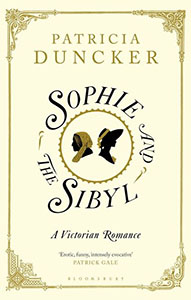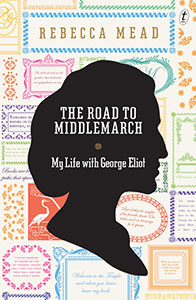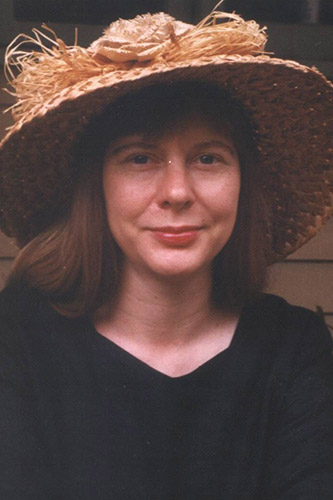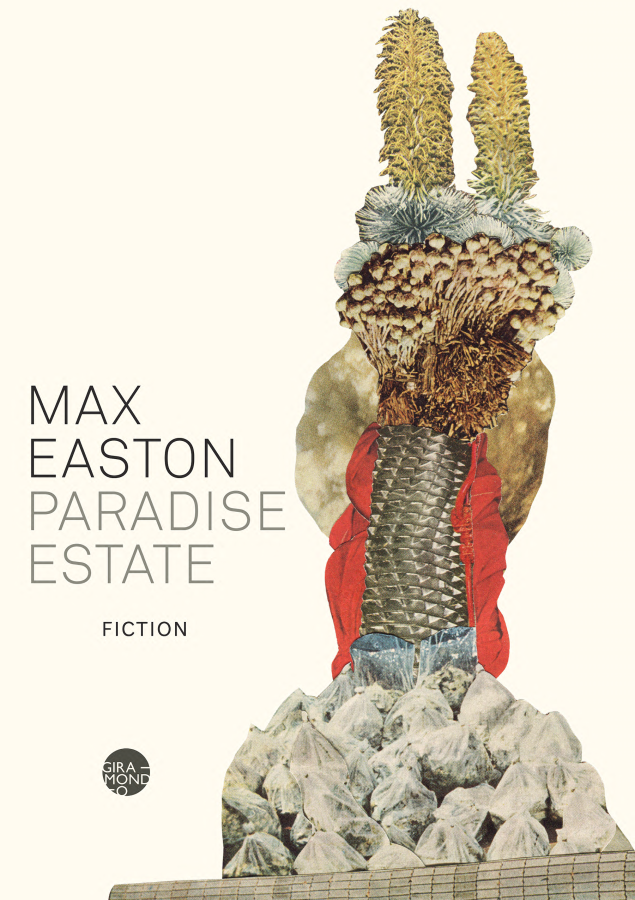The tale of Mary Ann Evans is pure Victorian paradox. Of the three feminine qualities conventionally prized—good looks, virtue and fecundity—she had none, and yet became one of the foremost women of her age. Although a famously plain woman, she ran off with someone else’s husband, and openly cohabited with him. In a staunchly Christian era, she lost her faith, becoming a freethinker. Such behaviour ensured ostracism, but the lady, through her novels, earned respect and celebrity status. She was an intellectual whose words about art, philosophy and even morality were revered. Her family had disowned her, but Queen Victoria was a fan. Despite her lower middle-class origins, she became the richest English author of her era. When she belatedly married it was to a handsome man a generation her junior. Of all the major Victorian authors, her pseudonym has almost completely subsumed her real name. Miss Evans, known as Mrs Lewes, incorrectly, and later Mrs John Cross, was the woman, but the author was George Eliot, the great Victorian.
She never wrote a memoir and the matter of her life was definitely unsuitable for a Victorian novel, not even a French one. What could an author do with a heroine who conquered, not by looks, but by force of personality? Charlotte Bronte did, with Jane Eyre, but her heroine was no intellectual phenomenon, although clear-sighted and astute. The second Mrs Rochester also shunned any career beyond the domestic. Later in the century the New Woman novel did privilege heroines who chose art over marriage. It was a daring development ¬– even without adding active sexuality to the mix. Eliot, far from being led astray by George Lewes, her lover and mentor, had previously belonged to several libidinous households. Lewes’ role in her personal narrative, as adoring, controlling Svengali, is not the matter of a modern feminist novel either, nor is the fact that Eliot’s exceptionalism was definitely not applied to her heroines. A woman smart, sexy without conventional beauty and supreme at her art — such defies not only women’s roles, but narrative conventions for the heroine, even in our so-called enlightened age. Eliot might have tended to squash or even kill her female characters, from Hetty to Dorothea; but there is nothing tragic about her.
Already a substantial Eliot arts industry exists, ranging from academe to television, and now appear yet more books on this fascinating Victorian subject, both acts of hommage. Two very different women, journalist Rebecca Mead and academic/novelist Patricia Duncker, united by their enthusiasm for Eliot’s writing, engage with the giantess of Victorian letters. They follow in a tradition of Eliot readers, whose involvement in the texts created a broad church of worshipping fandom, something apparent in her lifetime. It began with Lewes, who famously immersed Eliot in the works of Jane Austen before she wrote a single fictional word, and then became her first devoted reader. Appreciative publishers followed, then the reviewers and readers of Scenes from Clerical Life and onwards. They were initially unaware — with the notable exception of Dickens — that a woman had written the book, let alone that woman, who had scandalized literary London and her relatives. Queen Victoria, whose status as exemplary woman and monarch meant she could never meet the author, commissioned artwork depicting scenes from Adam Bede. Her daughter, Princess Louise, the most arty and unconventional of Victoria’s brood, similarly kept her distance, but when she saw Eliot at a concert reverently and skilfully sketched her on a programme. Eliot never accepted invitations, thus avoiding the public humiliation of being shunned, but at regular at-homes and soirées declaimed her wisdoms to an adoring audience. Some jaundiced spectators, such as the contrarian Eliza Lynn Linton, thought Eliot encouraged a nauseating idolatry. Strangers, women, would touch her cloak (which amused Lewes) and she even gained, in the person of Edith Simcox, a stalker.
Though Eliot is over a century dead, there is something most modern about her readership, and the nature of her celebrity. Fans were not content merely to read, but also sought a real-life acquaintance with the author. Mostly they were male, immorality being thought highly infectious for females. In the phrasing of a contemporary, only women who were émancipée, not caring what the world said, or with no social position to maintain, felt free to visit the celebrated author. One who did, and who experienced the disconnect between author and woman was Catherine Helen Spence. As an Australian she is probably beyond the research ken of Duncker and Mead. She was emancipated, proudly virginal, and far from Adelaide when she met Eliot.
Spence had been offered an introduction to Lewes, and asked that it include Eliot ‘whose works I so admired’. But the encounter did not go well:
For once I felt myself at fault. I did not get on with George Eliot. She said she was not well, and she did not look well. That strong pale face, where the features were those of Dante or Savanarola, did not soften as Mill’s [John Stuart] had done. The voice, which was singularly musical and impressive, touched me—I am more susceptible to voices than to features or complexion—but no subject that I started seemed to fall in with her ideas, and she started none in which I could follow her lead pleasantly. It was a short interview, and it was a failure. I felt I had been looked on as an inquisitive Australian desiring an interview upon any pretext […]
Despite the disappointment Spence kept reading Eliot and even reviewing her. ‘I thought that, if I sent the review to George Eliot with a note it might clear me from the suspicion of being a mere vulgar lionhunter.’
Eliot responded personally, and graciously:
Dear Madam […] I have always remembered your visit with a regretful feeling that I had probably caused you some pain by a rather unwise effort to give you a reception which the state of my health at the moment made altogether blundering and infelicitous. The mistake was all on my side, and you were not in the least to blame. I also remember that your studies have been of a serious kind, such as were likely to render a judgment on fiction and poetry, or, as the Germans, with better classification, say, in ‘Dichtung’ in general, quite other than the superficial haphazard remarks of which reviews are generally made. You will all the better understand that I have made it a rule not to read writing about myself. I am exceptionally sensitive and liable to discouragement; and to read much remark about my doings would have as depressing an effect on me as staring in a mirror—perhaps, I may say, of defective glass. But my husband looks at all the numerous articles that are forwarded to me, and kindly keeps them out of my way—only on rare occasions reading to me a passage which he thinks will comfort me by its evidence of unusual insight or sympathy. Yesterday he read your article in the Melbourne Review, and said at the end — ‘This is an excellently written article, which would do credit to any English periodical’ adding the very uncommon testimony, ‘I shall keep this.’ […] in the drawer he assigns to any writing about me that gives him pleasure. For he feels on my behalf more than I feel on my own, at least in matters of this kind. If you come to England again when I happen to be in town I hope that you will give me the pleasure of seeing you under happier auspices than those of your former visit. — I am, dear madam, yours sincerely, M.G. Lewes.”
Spence, though pleased, continued by citing Margaret (Mrs) Oliphant on Eliot:
‘Should I have done better if I had been kept, like her, in a mental green-house and taken care of? I have always had to think of other people and to plan everything for my own pleasure, it is true, very often, but always in subjection to the necessity which bound me to them. To bring up the boys [including her nephews] for the service of God was better than to write a fine novel, if it had been in my power to do so.’ The heart knows its own bitterness. There might have been some points in which George Eliot might have envied Mrs Oliphant.
The letter to Spence is revealing, not only of Eliot’s inherent good manners, but also of her concern with her literary reputation, and how Lewes protected her. Spence’s comments, however, reveal how contemporary women writers envied her. Lewes enabled her writing, and took charge of literary business, haggling for the best publishing deals. Spence and Oliphant had to work hard and alone in their literary mills. However, neither spinster Spence nor Eliot were exactly childfree, Spence raising several foster families, and Eliot being stepmother to Lewes’ three sons by his unfaithful wife Agnes. Did Oliphant not know about the Lewes boys, or think Eliot had brought them up ungodly? The trio, only one of whom outlived Eliot, seemed genuinely fond of her, and she of them, even the (to our eyes) dreadful Thornie, who could joke about shooting Bushmen in Cape Town. He would die young of TB, during the composition of Middlemarch. Eliot devotedly nursed him, and grieved with Lewes.
Rebecca Mead is a modern woman, without envy of Eliot’s opportunities. From the evidence of her The Road to Middlemarch, she has led a good life. What is unusual is the extent to which it has been informed by Eliot, and specifically by Middlemarch, which she read when 17, and an English schoolgirl. The book enraptured her. Clearly she was an unusually sophisticated teen, particularly since Virginia Woolf famously proclaimed Middlemarch as ‘one of the few English novels written for grown-ups’. It has romance, but wrongheaded, the plot featuring bad marital choices. A different author might have linked Dr Lydgate and Dorothea, but instead he marries spoilt, selfish Rosamond, and Dorothea, who craves intellectual companionship above all else, marries the dry-as-dust scholar Casuabon.
Mead does not say whether from Eliot she learnt to eschew the Casuabons of the modern era. Still, she notes ‘the questions which George Eliot shows her characters wrestling would all be mine eventually’. Her book is structured around a series of linkages, her life and Eliot’s, not because she feels herself on the same level (she is far too modest for that) but that they have lived through some similar experiences, including being a stepmother. Beyond the parallels between two Englishwomen of letters is a greater, more general one, most powerfully expressed in Middlemarch: the human condition of becoming resigned, not to living great lives, but lives that do some good, and are good enough.
The very title of The Road to Middlemarch suggests a scholarly study of influences, or the progress of young Eliot towards her acknowledged masterpiece. The former is not the case, and the latter is told only in part. Mead’s approach does run the risk of becoming fangirl, as when she visits Eliot’s haunts. Biography as geography can produce evocative writing, but of landscape rather than the personality who once inhabited it. More fannishly Mead also examines Eliot’s possessions, her manuscripts. She is not uncritical of her subject, but neither does she bring to the life and works an insight that offers anything particularly new. It is not her fault, for Eliot has been rather extensively scrutinised.
It is when Mead’s focus moves from the diva to a figure who is like her, a devoted Eliot reader, that she becomes most interesting. Alexander Main, a young Scot, compiled what is to us an unbearably sycophantic book, Wise, Witty and Tender Sayings, selected from the works of Eliot, a project she and Lewes approved. Mead reads all his letters, with sympathy. Eliot, very sensibly, never met him – he might well have metamorphosed into another Edith Simcox, pathetically and fruitlessly in love with her, and chronicling her doings jealously.
Wise, Witty and Tender Sayings also is author-merchandising, more usually associated with Dickens in the Victorian era. Though it has been some years since Eliot was televised – and another Middlemarch is overdue – she can still inspire artwork. Australian illustrator Kathleen Jennings recently had the commission of depicting Middlemarch for a lithograph t-shirt, and in her blog wrote:
A lot happens in 1000 pages, and the novel has an ensemble-cast, so the process of finding an iconic image was complex. In the end, I simmered the ideas down to a focus on Dorothea’s story (since she begins and ends the novel), and the idea of how the choices we make, the context in which we live and the passage of time all limit the options available to us (I’ve been told that sounds depressing, but spread over 1000 pages it’s almost reassuring). So the sketches featured Dorothea, her husband the elderly, academic Casaubon, Highly Symbolic Trees (TM), and passionate, unsettled Will Ladislaw.
Image: © Kathleen Jennings.
Jennings ’ t-shirt for Middlemarch can be found here . Had the Middlemarch t-shirt existed in the Victorian era, one imagines the sales would have been vast – and George Lewes would have ensured a cut of the proceeds. Eliot might even have been amused, for Jennings’ interpretation is respectful, charming, and does absolutely no harm to her carefully nurtured reputation. Mead’s work has much of the same spirit. It is hard to criticise her book, for she is genuine, and diligent, but her mix of memoir, biography and literary criticism does not entirely seem to satisfy. It is well-written, but unassuming—something that Eliot was most definitely not.
A work similarly fannish, but neither unassuming nor respectful is Duncker’s Sophie and the Sibyl, her sixth novel. Very daringly, she includes Eliot as a character, a decision with the possibilities of great disaster. The novel mixes the personal and the professional, with two of the characters being brothers and Eliot’s publishers. They seek the German translation rights to Middlemarch, and so the younger, and handsomer, Max, is despatched to charm Eliot. Though he is no novel reader, he falls completely and embarrassingly under her spell.
Historical novels can never hope totally to recreate a lost past. Our values are always imposed, from the subject’s future. Jane Austen film adaptations, for instance, always contain echoes, in makeup and styling, of the time in which they were made. Writing about sex is a sure giveaway of such incomplete imaginings, as are improbably feminist heroines. Sometimes the novels themselves seem an excuse for research, and the display of it (too often lumpen). Penelope Fitzgerald dealt with this problem in her historical novels, such as The Blue Flower, by keeping them short, a series of vivid impressionistic vignettes. Part of their effectiveness was that Fitzgerald, having done the research, discarded most of it, not putting it on the page but still informing her work as back story. She left spaces for her readers to fill in.
Duncker’s approach is completely different. She revives a Victorian trope, the omnipresent, opinionated narrator, but here a young woman of the twenty-first century. Thus past and present meet in the narrative, in a Neo-Victorian novel that is thoroughly post-modern. It is more Joan Makes History than The Secret River, more playful than earnest, while at the same time having great serious intent. Perhaps the closest thing to it in Australian letters is A. Frances Johnson’s Eugene’s Falls, a post-modern take on von Guerard. Duncker’s concerns are with reader, and creator, and the perils of being fannish. The complexity of her project is announced in an epigraph by the narrator:
Our author [ie Duncker] is one of those sentimental people who need to admire their chosen heroes and heroines. She cannot bear it if her appointed gods turn out to be made of flesh and blood—with personal vanities and frailties as disappointingly tedious as our own. I think she has scores to settle […]with Mrs.Lewes, but she adores [her]. And that is her weakness. Her vindictive little game is undermined by love.
At the end of the novel Duncker admits in an afterword that though she adores the work, she doubts she (like Spence) would have ‘much liked’ the author herself. In between these comments is a novel that is as clever as the Sybil herself, with the courage of its convictions, and opinions. Duncker by her own account follows the methods of a widely revered Neo-Victorian novel, John Fowles’ The French Lieutenant’s Woman, while judging it ‘powerfully awful’. Part of her dislike is for its narrator, a ‘pompous sexual know-all’ of the 1960s, Fowles himself thinly disguised by a top hat and frock coat. Her narrator is distanced from her, not sharing the adoration for Eliot. This persona was Duncker’s pathfinder into the past, with help from Edith Simcox’s Journal, the testimony of the ultimate Eliot fangirl.
The ageing Eliot is one heroine of the book, the other being Sophie von Hahn, an Eliot admirer, and Max’s intended. She is a perfect example of the wilful Victorian girl who in the tropes of the sentimental, didactic novel, would suffer humiliation or brain-fever before settling for dutiful wifehood. As it transpires Eliot will equally arrogantly use her as a model for Daniel Deronda’s Gwendolen Harleth, though Sophie’s fate is to be unbowed. She is a German aristocrat, with all the confidence of her class, a harbinger of the New Woman ideal while aspiring to no more outside the domestic sphere than a successful racehorse stable. Though Duncker does not mention Sensation novelist Mary Braddon (who like Eliot managed a successful career, while living in sin with her publisher) Sophie is very like the eponymous horsy heroine of her Aurora Floyd. Sophie is perhaps a little too much of a superwoman—beautiful, spirited, capable. But when she tangles with another superwoman, the great author, it is Sophie who emerges victrix.
What happens is a comedy of errors, in which Eliot’s own powers of observation, her self-appointed role as moraliser, and her concern with manners (as evidenced in her letter to Spence), are used against her. Perhaps Mrs Lewes most simply indulges in a spot of mischief between two young people visibly attracted to each other, but not actually committed. Sophie writes to the famous stranger, seeking advice, and Eliot passes the letter onto Max. It is a breach of decorum, and Sophie is profoundly offended. She will eventually forgive Max, but not Eliot. Briefly transformed into a mouthpiece for Duncker, she reproaches the diva:
Why should I care whether you are, or are not, legally married to Mr. Lewes? Plenty of people live like that in Germany. I wouldn’t be so small-minded. I wasn’t brought up to think about other people in such an ungenerous way. But you, you are not generous. If I had been you and had your choices before me, I would not have written your books in the way you have done. I would not have told women to be satisfied with self-sacrifice, convention and subservience. I would not have lived one life and believed in another.
A lesser writer would hesitate to engage so directly with a literary diva, even in fiction. Duncker does not, and produces a tour-de-force. Sophie and the Sibyl is a novel convincing in its depiction of the lost Victorian past, even when written from the viewpoint of the jaundiced post-modern. It is fiendishly clever, but also fully realised. Biography, a study of reading vs fan-worship, and literary criticism all meet here, colliding in a shower of sparks, but most satisfyingly. Above all Duncker presents the two sides of Eliot, woman and sibyl, with all her contradictions intact. She is empathetic, and egotistic; like Dorothea clever but also obtuse; femininely submissive to Lewes whilst dominating the world of letters, outselling her male contemporaries. The result is one of the best novels of the year.
References
Mary Braddon, Aurora Floyd (Tinsley, 1863).
George Eliot, Adam Bede (Blackwood, 1859).
– Daniel Deronda (Blackwood, 1876).
– Middlemarch (Blackwood, 1871-2).
– Scenes from Clerical Life (Blackwood, 1858).
George Eliot and Alexander Main, Wise, Witty, and Tender Sayings, in Prose and Verse, Selected from the Works of George Eliot (Blackwood, 1872).
Penelope Fitzgerald, The Blue Flower (Houghton Mifflin, 1995).
John Fowles, The French Lieutenant’s Woman (Jonathan Cape, 1969).
Kate Grenville, Joan Makes History (UQP, 1988).
– The Secret River (Text 2005).
A. Frances Johnson, Eugene’s Falls (Arcadia, 2007).
Catherine Helen Spence, Catherine Helen Spence: an Autobiography (W. K. Thomas, 1910).







